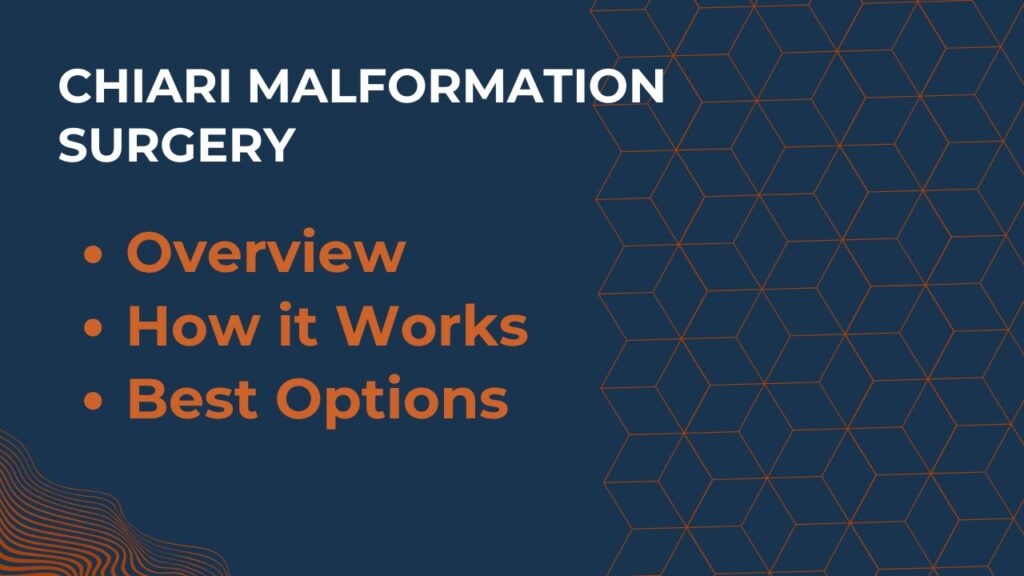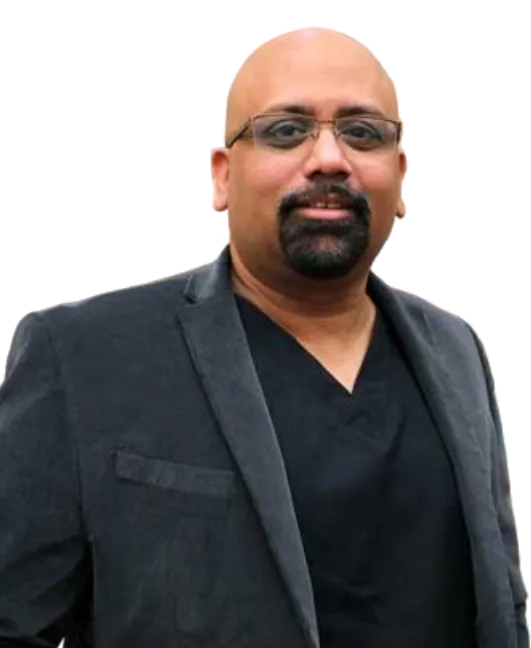Chiari Surgery
Chiari Surgery | Surgery for Arnold-Chiari Malformation) in Pune, MH, India
Best Surgeon for Chiari Surgery (Surgery for Arnold-Chiari Malformation)
Chiari malformation is a condition where the brain tissue, specifically the lower part of the cerebellum (the cerebellar tonsils), extends downward into the spinal canal. This can put pressure on the brainstem and spinal cord, and disrupt the normal flow of cerebrospinal fluid (CSF). While some people with Chiari malformation have no symptoms, others experience severe headaches, neck pain, and a host of neurological issues that can be debilitating.
In Pune, India, Dr. Jaydev Panchwagh is a highly specialized neurosurgeon with extensive experience in treating Chiari malformation. His expertise in complex posterior fossa surgery provides a definitive solution to relieve this pressure, alleviate symptoms, and prevent further neurological damage.

What is Chiari Surgery?
Chiari surgery, or more specifically, Posterior Fossa Decompression, is the primary treatment for symptomatic Chiari malformation. The goal of the surgery is to create more space for the cerebellum and to relieve the pressure on the brainstem and spinal cord.
The surgery does not correct the anatomical displacement of the brain tissue, but it does relieve the compression that is causing the symptoms.
The procedure is typically recommended for patients who have persistent, debilitating symptoms that do not respond to other forms of treatment, or for those who show evidence of a syrinx (a fluid-filled cavity) in their spinal cord.
How Does It Work?
Posterior fossa decompression is a delicate and intricate procedure performed under general anesthesia.
- Surgical Access: A small incision is made at the back of the neck, just below the hairline. The surgeon then carefully dissects through the neck muscles to expose the base of the skull and the first vertebra of the spine (C1).
- Bone Removal (Decompression): The surgeon removes a small section of the skull at the back (a suboccipital craniectomy) and often a portion of the first vertebra (C1 laminectomy) to create more space. This provides immediate relief of the bony pressure on the brainstem and cerebellum.
- Dural Augmentation (Optional): In some cases, to create even more space and ensure CSF flow, the surgeon may also open the dura (the tough membrane covering the brain) and sew in a patch to expand the space. This is a crucial step for many patients to restore CSF circulation.
Closure: Once the decompression is complete, the neck muscles and skin are carefully closed. The patient is closely monitored in the hospital for a few days before being discharged.
Why Choose Dr. Jaydev Panchwagh for Chiari Surgery?
Chiari surgery requires a neurosurgeon with a deep understanding of the delicate posterior fossa anatomy and a commitment to precision. Dr. Jaydev Panchwagh in Pune, India, is a top choice for this procedure because of his:
- Extensive Experience: With over two decades in neurosurgery, Dr. Panchwagh has significant experience in performing complex skull base and posterior fossa surgeries, which are essential skills for Chiari decompression.
- Precision and Safety: He utilizes advanced surgical techniques and tools, including a high-power operating microscope and intraoperative neuromonitoring, to perform the decompression with extreme precision while protecting the brainstem and spinal cord.
- Focus on Symptom Relief: The primary goal of the surgery is to improve the patient’s quality of life by alleviating the debilitating symptoms of headaches, pain, and balance issues. Dr. Panchwagh and his team are committed to achieving this outcome for every patient.
Patient-Centric Care: He provides a thorough and compassionate evaluation, taking the time to explain the diagnosis and surgical plan, ensuring patients are well-informed and comfortable with their treatment choice.
Frequently Asked Questions (FAQs) about Chiari Surgery
The majority of patients experience significant improvement in symptoms, especially headaches, neck pain, and balance issues. The success rate for symptom relief is very high, although some symptoms may linger or take time to improve.
The procedure typically takes a few hours, but the total time under anesthesia and in the operating room is longer.
Patients typically stay in the hospital for 3-5 days. Recovery at home involves managing pain and avoiding strenuous activities. Full recovery can take a few weeks to several months, and rehabilitation may be required to regain strength and function.
The posterior fossa decompression is designed to be a permanent solution. While a small percentage of patients may need a second surgery to address a fluid collection or re-establish CSF flow, the vast majority do not.
A Chiari malformation can be a source of significant pain and frustration, but it is a treatable condition. With the advanced surgical expertise of Dr. Jaydev Panchwagh, you can find the relief you need and regain your quality of life.

A distinguished Brain and Spine Surgeon, shaping neurosurgical care in Pune, Maharashtra, India for over two decades.
Quick Link

Quick Contacts
- Phone : (+91) 9011333841 , (+91) 7720948948
- brainspine66@gmail.com
- 102, Bhagyatara Society, 1st floor, Mehendale Garage road, Erandwane, Pune
Map
- Copyright @2025 | Dr. Jaydev Panchwagh | Praavi Medicare
